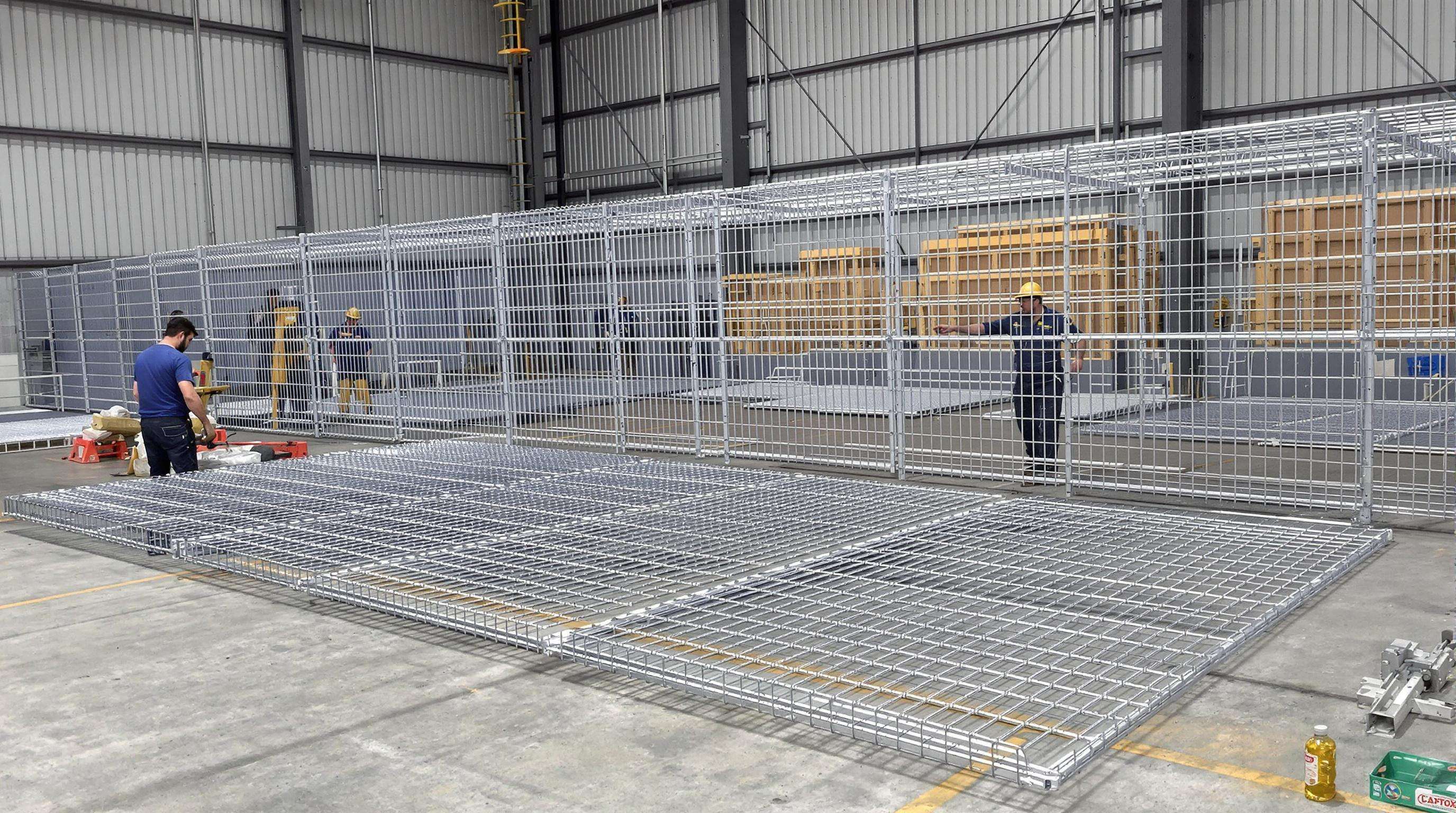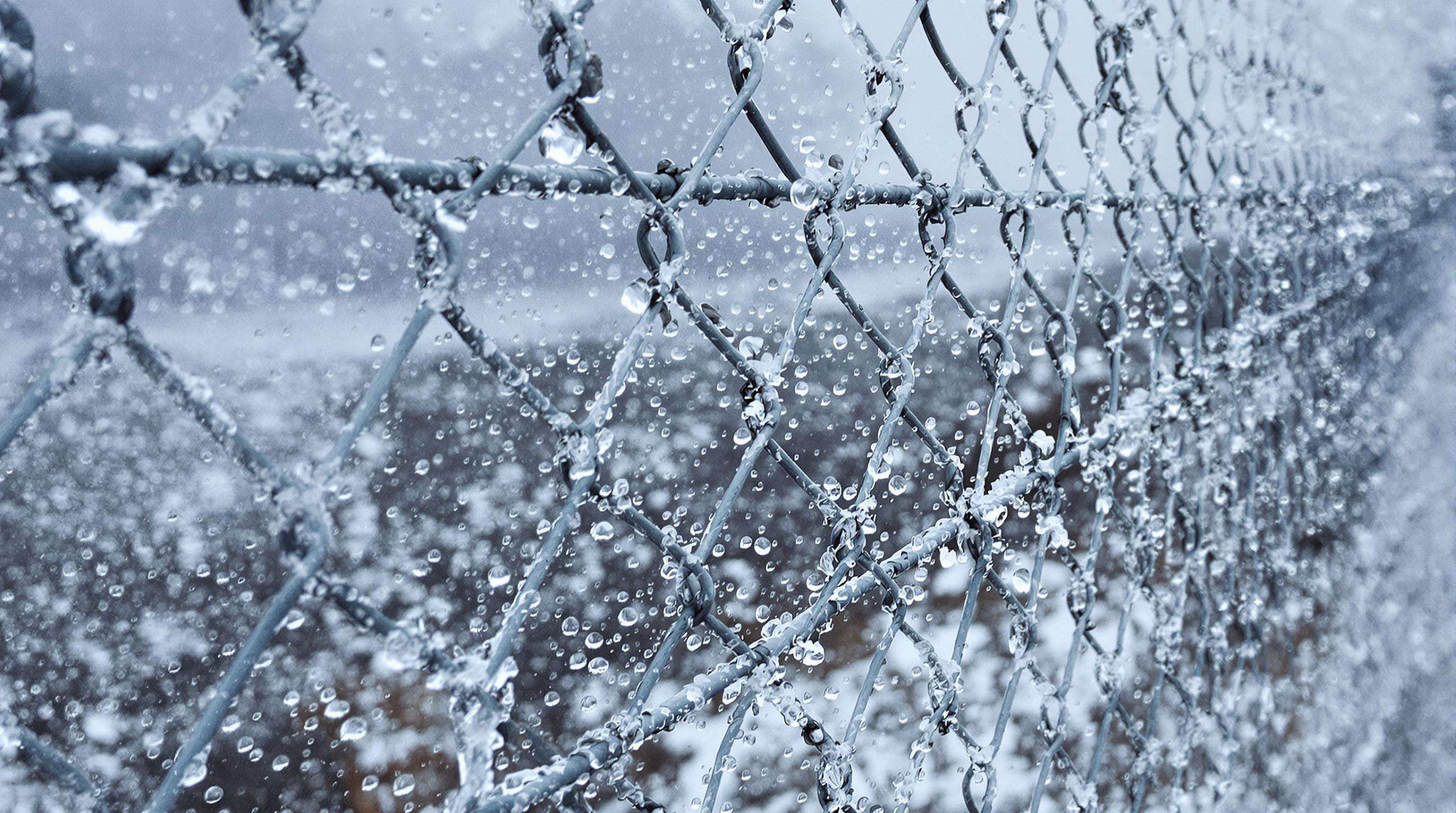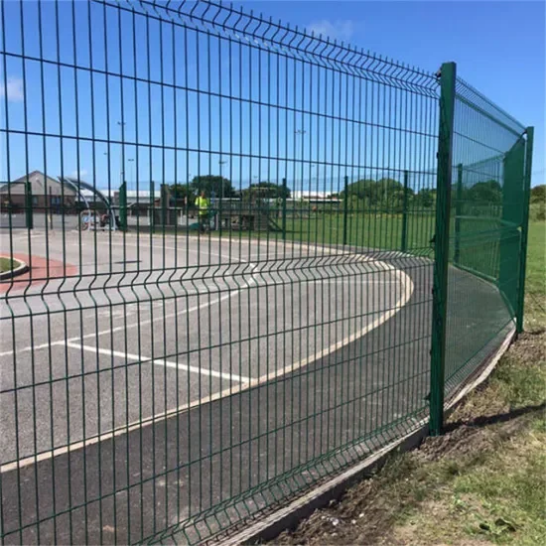Unmatched Strength and Durability of Double Wire Mesh Fence Systems

Structural Mechanics Behind the Enhanced Strength of Twin-Wire Fencing
Double wire mesh fencing gets much stronger because it combines two horizontal wires about 8mm thick with vertical ones around 6mm thick running through them. The crisscross pattern spreads out any pressure across the whole fence instead of concentrating it at certain spots where single wire fences tend to break down over time. When manufacturers remove those V-shaped bends from the mesh, they can install panels that lie completely flat against surfaces. This change actually makes the fence stand up better against twisting forces by roughly 40 percent when compared to older style designs. For places needing secure boundaries all day every day without fail, this kind of industrial grade wire mesh becomes practically essential.
Wire Gauge, Mesh Density, and Load Resistance in High-Traffic Industrial Zones
The system’s 65mm x 200mm mesh density provides critical advantages:
| Feature | Performance Benefit |
|---|---|
| 8mm horizontal wires | Withstands 3,200 lbs/ft impact forces |
| 6mm vertical spacing | Prevents hand/foot holds for climbing attempts |
| Galvanized junctions | Maintains integrity in -30°F to 120°F environments |
In logistics hubs, this configuration resists deformation from forklift impacts and stacking pressures exceeding OSHA’s 250 lbs/sq.ft warehouse floor standards.
Real-World Performance: Long-Term Use in Heavy-Duty Manufacturing Plants
According to a 2023 look at 47 different auto manufacturing sites, twin wire fencing needed only about a fifth of the repairs that chain link versions required during five year spans. One plant located near the ocean saw amazing results too. They applied special salt resistant coatings to their fences, which kept them from needing replacement for well over a decade even though they faced daily conditions with around 85% humidity plus all sorts of tiny particles floating through the air. The bottom line? These durable options cut down on yearly expenses for securing factory grounds by roughly $18 to $22 for each linear foot when compared against traditional welded wire systems.
Superior Security and Perimeter Control for Industrial Sites
Physical and Visual Deterrence: How Double Wire Mesh Fence Enhances Site Security
Double wire mesh fences offer strong protection against both physical breaches and psychological intrusion at industrial locations. The steel wires are interlocked to form something like a three dimensional barrier that makes it really hard to cut through or climb over. At the same time, the open mesh allows people to see what's going on, so security staff can keep watch without missing anything important. People who might try to sneak in tend to stay away when they know they'll be seen clearly. Chemical plants and other high risk areas benefit especially from these fences because the wire is between 7 and 10 mm thick, much thicker than regular single layer fencing. This extra thickness means the fence can handle impacts from vehicles or even intentional damage attempts without giving way.
Integration with Surveillance, Access Control, and Zoning Strategies
Industrial security these days really needs multiple layers of protection working together. Double wire mesh fencing actually plays well with surveillance setups because those gaps between wires don't block cameras from seeing what's going on. Some facilities even attach motion detectors and those fancy AI systems right onto the fence panels themselves, so they get instant warnings when someone tries to sneak through. A recent study from the Security Industry Association showed something interesting too – when companies combine regular fences with things like fingerprint scanners at entry points, break-ins drop by around two thirds in manufacturing areas. Plus, this kind of fencing helps organize workspaces better. Different colored sections make it easier for staff to know where they should go and stay away from dangerous parts of the facility altogether.
Case Study: Protecting Warehouses in Major Logistics and Distribution Hubs
When a logistics center near Liverpool swapped out their old chain link fence for a double wire mesh system, they saw an amazing drop in security incidents - down by almost 92%. The new fence stood 12 meters tall with those special curved tops that make climbing impossible, plus base plates designed so nobody could tamper with them. They also installed these vibration sensors along the perimeter which would send instant alerts if someone tried to get through. Looking back over the past 18 months, the company estimates they saved around £240,000 that would have been lost to theft otherwise. For facilities storing valuable goods, this kind of investment in proper fencing really pays off in the long run when it comes to keeping operations running smoothly without unexpected security costs.
Corrosion Resistance and Long-Term Cost Savings

Galvanization and Coating Technologies for Extended Fence Lifespan
Industrial grade double wire mesh fences get their corrosion resistance from some pretty advanced metal treatment techniques. When we talk about hot dip galvanizing, it actually applies a much thicker zinc coating than regular galvanization methods do something around 85 to 120 microns thick, which acts as a real shield against rust formation. In really harsh places such as chemical processing facilities, adding a powder coated PVC layer on top of that galvanized surface makes all the difference. A recent study published in the Corrosion Engineering Journal back in 2024 showed these coated systems cut down oxidation problems by about seventy percent when compared to just plain old uncoated versions. That kind of protection is essential where equipment needs to last decades despite constant exposure to aggressive chemicals and weather conditions.
Performance in Harsh Environments: Case Study from Coastal Industrial Zones
In 2023 tests at several coastal manufacturing plants showed that double wire mesh fences kept about 92% of their original strength even after sitting out in salt spray for a full decade. Regular welded wire fencing just couldn't handle it - those same fences needed replacing around year six because they got brittle from all the corrosion. What makes the dual wire system work so well? The way the wires lock together stops water from collecting right at the joints. This matters a lot in places where humidity is always high, like near oceanfront industrial sites.
Lifecycle Cost Analysis: Why Double Wire Mesh Fence Reduces Maintenance Expenses
| Cost Factor | Traditional Chain Link | Double Wire Mesh |
|---|---|---|
| Initial Installation | $18/ft | $24/ft |
| 10-Year Maintenance | $14/ft | $3.5/ft |
| Replacement Cycles | Every 7–9 Years | 15–20 Years |
This table illustrates why industrial operators report 50% lower lifetime costs with double wire mesh systems. Reduced cleaning frequency (bi-annual vs quarterly) and elimination of rust removal treatments account for 78% of the savings, per a 2023 analysis by the Industrial Infrastructure Research Consortium.
Design Flexibility and Adaptability in Industrial Applications
Customization for Large-Scale Compounds and Uneven Terrains
Double wire mesh fencing works really well in industrial settings because of how modular they are. The system can be adapted easily to fit all sorts of complicated layouts. Post spacing ranges from 2 to 12 feet apart, while panels come in heights between 6 and 20 feet tall. This means installers can handle sloped ground, rocky areas, or buildings with multiple levels without weakening the fence's strength. Many security planners struggle with securing long, irregular boundaries that sometimes stretch over five miles or more. These fences tackle exactly that problem with their flexible configuration options.
Applications Across Infrastructure, Manufacturing, and Storage Facilities
A 2024 analysis in Processes journal confirms these fences serve critical roles in 85% of secondary-sector operations, including automotive plants requiring machine containment and logistics hubs needing clear visibility. Their modular panels support rapid reconfiguration—essential for facilities managing seasonal capacity changes or adhering to evolving OSHA safety protocols.
Compliance with Industrial Safety and Regulatory Standards
Meeting OSHA, ISO, and Fire Safety Requirements with Double Wire Mesh Fence
Steel that's been galvanized satisfies the OSHA 1910.23 standards when it comes to load bearing guardrails, needing at least 200 pounds per foot of vertical load capacity. The mesh design usually has spaces between 2 to 4 inches apart, meeting ISO 14122-3 rules for preventing falls while still allowing people to see through clearly. When thinking about fire safety, these structures use materials that won't catch fire easily, so flames can't spread quickly. The gaps are kept small, around 1/8 inch or less, which helps control how much oxygen gets to any potential hazards. This is really important for places like chemical plants where they need to meet those tough NFPA 701 standards for resisting flames.
Emergency Egress Planning and Worker Safety Considerations
Double wire mesh fencing works really well alongside evacuation paths because it lets air through at around 96%, which helps cut down on wind pressure when people need to get out fast during emergencies. The gates come equipped with panic bars that meet the requirements set by OSHA regulation 1910.36 regarding proper exit dimensions. What's more important though is how these gates stay functional even after being exposed to harsh conditions for long periods thanks to their corrosion resistant hinges. This reliability matters a lot based on what happened in several coastal refinery incidents reported back in 2023. Traditional fence systems there just couldn't hold up and started failing after about 18 months of service.
Frequently Asked Questions (FAQ)
What makes double wire mesh fencing stronger and more durable?
Double wire mesh fencing combines two horizontal wires about 8mm thick with vertical ones around 6mm thick, distributing pressure across the whole fence, which enhances its overall strength and durability.
How does double wire mesh fencing enhance security in industrial areas?
The fences provide physical and visual deterrence due to their robust construction and open mesh, allowing for visibility. They also integrate well with surveillance and access control systems.
What is the lifespan comparison between traditional chain link and double wire mesh fences?
Double wire mesh fences have a lifespan of 15–20 years compared to 7–9 years for traditional chain link fences, significantly reducing maintenance needs and costs.
How do these fences perform in coastal or harsh environments?
Double wire mesh fences maintain about 92% of their strength even after a decade in salty environments due to advanced galvanization and coating technologies.
Table of Contents
- Unmatched Strength and Durability of Double Wire Mesh Fence Systems
- Superior Security and Perimeter Control for Industrial Sites
- Corrosion Resistance and Long-Term Cost Savings
- Design Flexibility and Adaptability in Industrial Applications
- Compliance with Industrial Safety and Regulatory Standards
- Frequently Asked Questions (FAQ)
 EN
EN

